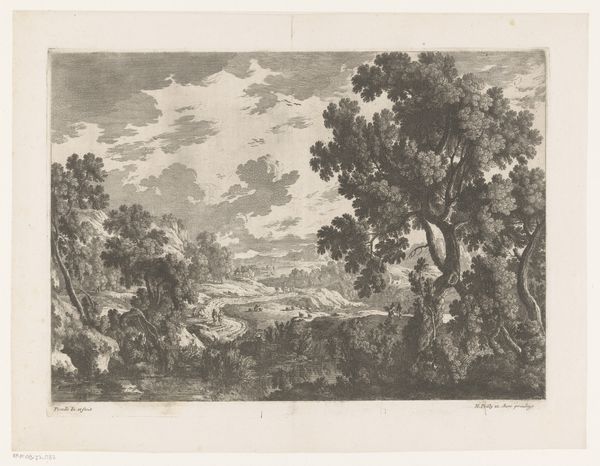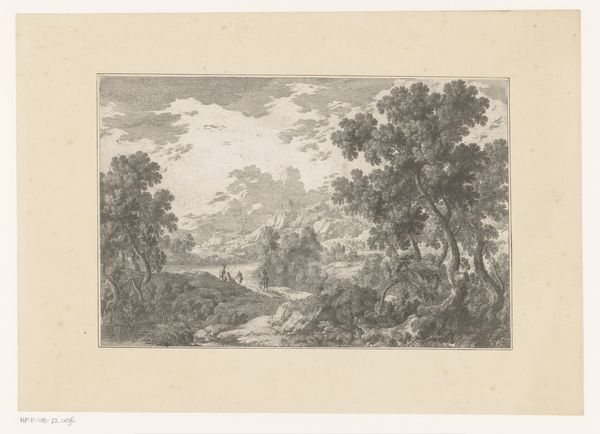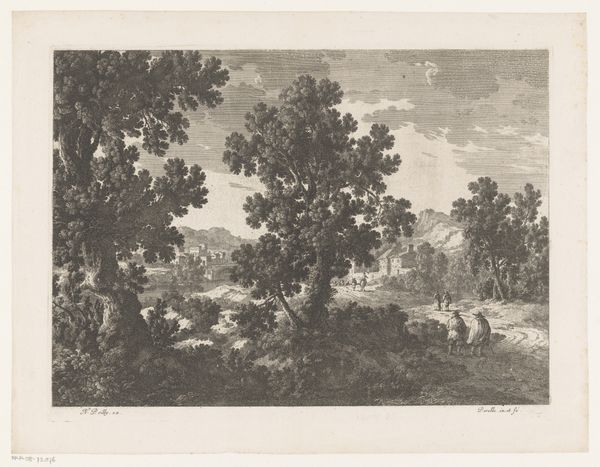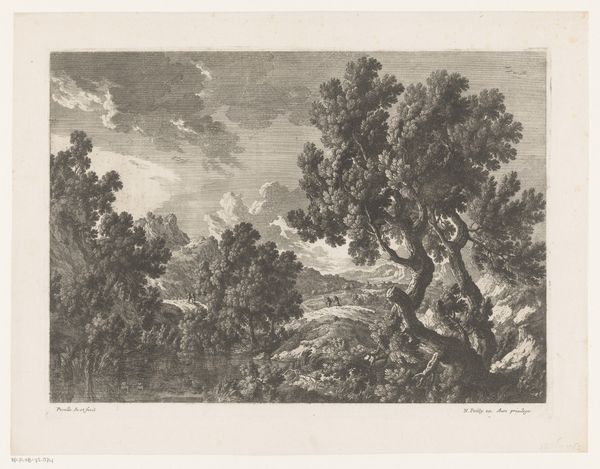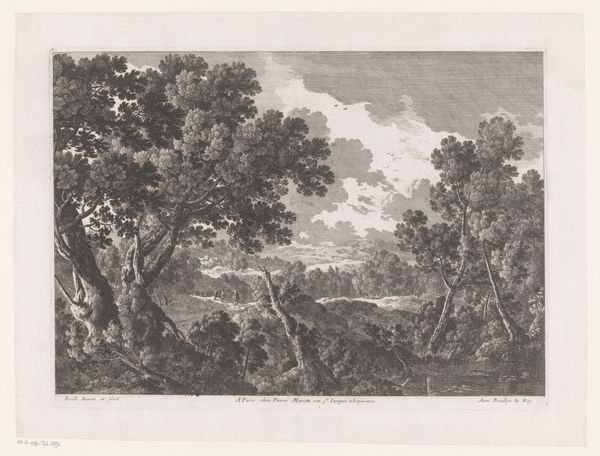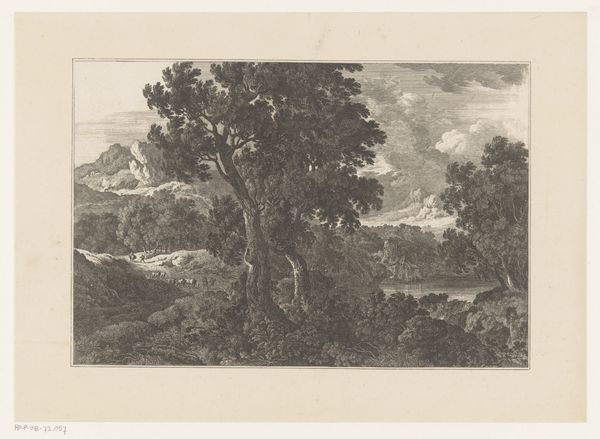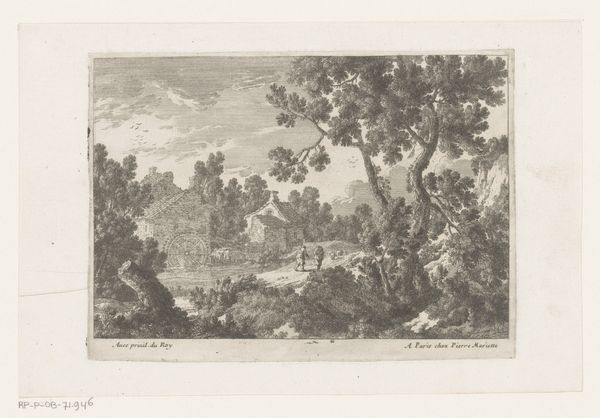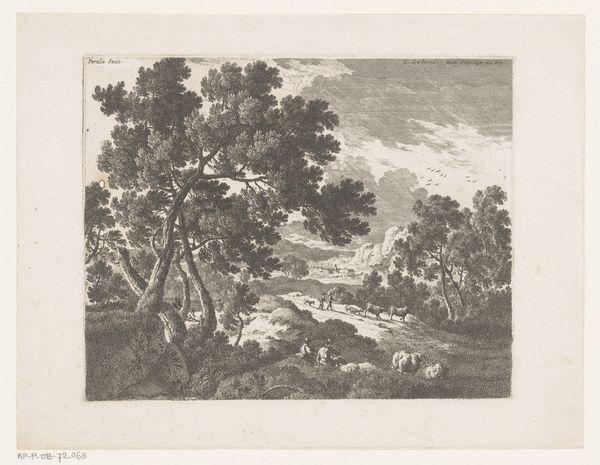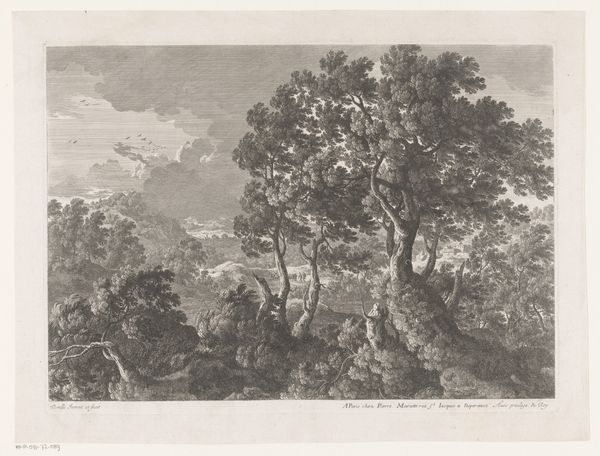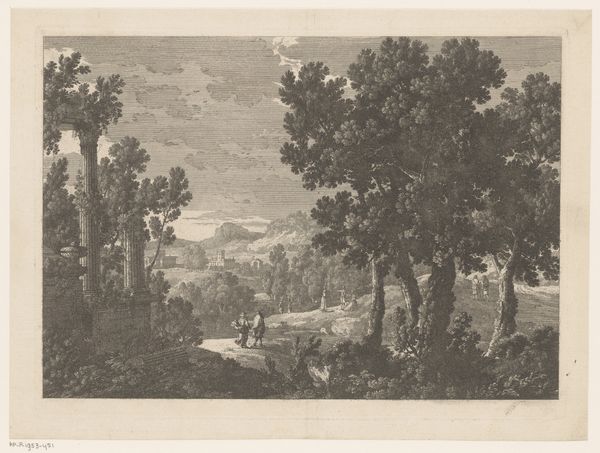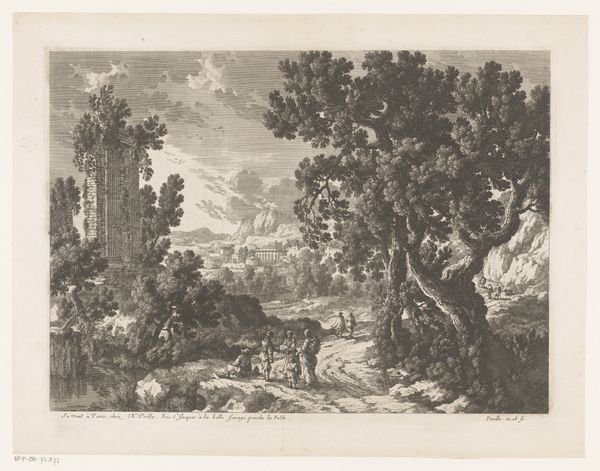
print, engraving
#
natural tone
# print
#
landscape
#
classical-realism
#
natural colouring
#
history-painting
#
natural palette
#
engraving
Dimensions: height 305 mm, width 406 mm
Copyright: Rijks Museum: Open Domain
Editor: This is "Landschap met figuren bij antieke ruïne," or "Landscape with Figures near an Ancient Ruin," an engraving by Nicolas Perelle, dating from somewhere between 1636 and 1695. There's something very serene, almost melancholic about the composition, with the crumbling ruins nestled amongst this idyllic landscape. What social narratives are at play here? Curator: I'm immediately drawn to the tension Perelle sets up between the natural and the constructed. This landscape isn’t just a pretty backdrop; it's actively reclaiming the classical architecture. We often romanticize ruins, but Perelle subtly reminds us of the forces—both natural and, arguably, social—that lead to the decay of civilizations and ideologies. Do you notice how the figures seem dwarfed, almost insignificant, next to the imposing ruins and the surrounding trees? Editor: Yes, they seem almost like spectators, or even wanderers, insignificant against the vastness of both nature and time. It makes me think about the fleeting nature of power structures. Curator: Exactly! Perelle presents us with a potent commentary on power, time, and memory. Who do you think those ruins were built to serve, and what happened to that power? The contrast between the enduring natural landscape and the decaying structures compels us to question not just the past, but our present structures as well. How might future generations view our own monuments, our own attempts at creating lasting legacies? Editor: That's a sobering thought. It’s more than just a pretty landscape then; it is about cycles of power and the inevitable passing of time, isn’t it? I'll never look at ruins the same way again! Curator: Precisely. It is in understanding that intersection of power and time that history truly comes to life, challenging our assumptions.
Comments
No comments
Be the first to comment and join the conversation on the ultimate creative platform.
